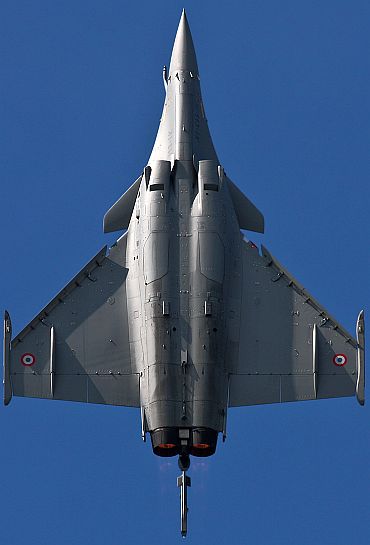
For years, India's proposed purchase of 126 medium multi-role combat aircraft (MMRCA) -- the world's largest overseas fighter buy for which the Typhoon, built by Eurofighter GmbH; and the Rafale, developed by French vendor Dassault, remain in contention --- has been valued at Rs 42,000 crore, almost US $10 billion.
Now that valuation is set to rise dramatically, as the Ministry of Defence carries out a process called benchmarking.
Benchmarking is the crucial process of estimating the fair price for any purchase, and is completed before the MoD opens the price bids for any tender.
This is done by an MoD committee which scrutinises similar tenders worldwide, especially recent sales, to arrive at a comparable --- or as the name suggests, a benchmark --- price.
If all the vendors' bids emerge significantly higher than the benchmark, the tender is cancelled and the process begun afresh.
...
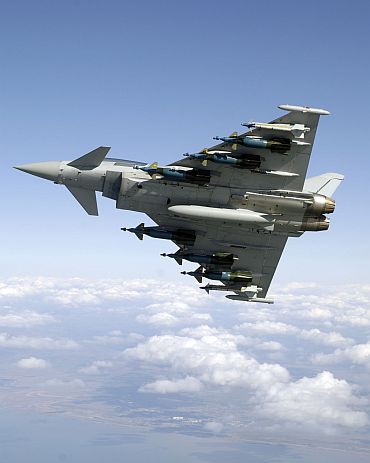
For example, if the MoD committee that is currently benchmarking the MMRCA concludes that Rs 42,000 crore is a decade-old estimation that should be increased due to inflation by 50 per cent, the benchmark for that contract will be pegged at Rs 63,000 crore.
When the Eurofighter's and Dassault's bids are opened, if both turn out to be notably higher, the MoD will scrap the MMRCA tender.
On the other hand, if the lower bid is less than or approximates the benchmark, that bid will be accepted.
The benchmark figure has become crucial for the Typhoon and Rafale, which are acknowledged as the most expensive of the six fighters that competed for the IAF's order.
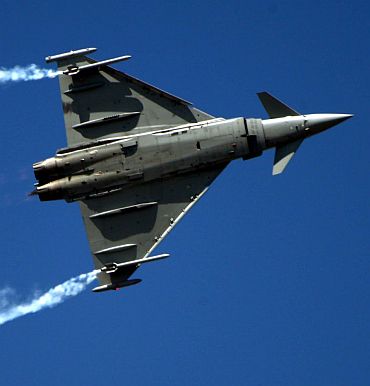
Watching from the sidelines and hoping that the procurement falls through are the four aircraft vendors who were eliminated from the MMRCA contest in April: Russia's MiG; Sweden's Saab; and American companies, Boeing and Lockheed Martin.
Two of those vendors have told Business Standard that they believe that Eurofighter's and Dassault's quotes will be far higher than the benchmark.
If they are correct, the long process of obtaining sanctions, tendering, evaluations and field trials will have been fruitless.
One eliminated contestant sources the Rafale's price from the Brazilian media, which has keenly followed the contest between Dassault, Saab and Boeing to sell 36 fighters to the Brazilian Air Force.
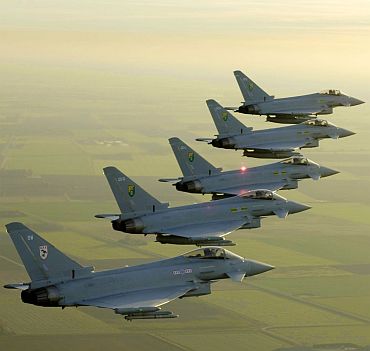
A detailed story in the Sao Paulo-based daily, Folha de S Paulo, pegs the Rafale bid at US $6.2 billion (plus another US $4 billion for maintenance over the next 30 years, according to the terms of the Brazilian tender).
Quoting French sources, the daily reports that the $6.2 billion bid is a discounted price, brought down from $8.2 billion after intense Brazilian pressure on Paris. Extrapolating these figures onto the Indian contract, Dassault's quote for 126 MMRCAs could be as much as $20 billion, twice the initially estimated figure.
Aerospace industry estimations put the cost of the Eurofighter Typhoon about 25 per cent higher than the Rafale. That would put the cost of 126 Typhoons at about $25 billion.
The Indian price bids, however, involve a different calculation. The South Block tender demands price quotes on a "life-cycle" basis, a complex and detailed format that factors in the cost of 126 fighters over their estimated service life of 40 years.

Bids are broken down into seven heads --- M-1 to M-7 --- and include the fly-away cost of the fighter; cost of spare parts; operating costs; cost of inspections and maintenance; transfer of technology; and training expenses. The final figure, M-8, is the overall cost, reached by adding up M-1 to M-7.
Executives from Rafale and Eurofighter agree that Rs 42,000 crore is an outdated price and that the survival of the MMRCA contract now depends upon how much higher the MoD is willing to raise the benchmark.
"Rs 42,000 crore was a price estimated a decade ago, and that was for a smaller, single-engine fighter. When you factor inflation, and the fact that India is now buying a heavy, twin-engine fighter, naturally the price will be much higher," says a senior executive from one of the vendor companies.
A keen watcher of these developments is Lockheed Martin, whose F-16IN Super Viper was rejected by the IAF. A visiting Lockheed Martin executive told Business Standard that the fifth-generation F-35 Lightening II would become a real option for India if the MMRCA procurement was scrapped.
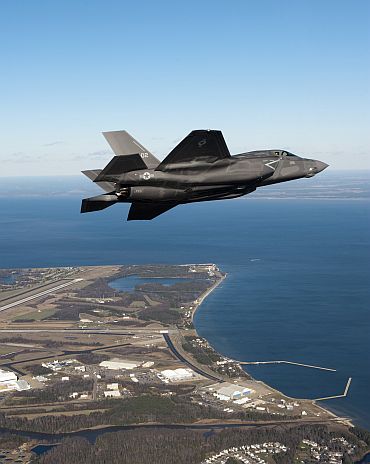
"We did not offer the F-35 for the MMRCA contract because it exceeded the Indian specifications; the fighter was not yet ready for the kind of flight testing specified in the tender; and because the US government had not yet approved it for release to India to include transfer of technology as specified in the RfP," said Orville Prins, Lockheed Martin's Vice President for Business Development.
Six years down the line, these conditions have changed. Prins now points out that, with Lockheed Martin set to build 20 fighters per month, i.e. 240 per year, "we could be in a position to supply India with its first F-35s by 2016, contingent upon many additional factors, including US governmental approval that would affect this timing."
Asked for the cost of the F-35, Lockheed Martin estimates it "in the mid-60s", i.e. somewhere between $60-70 million for the conventional version of the fighter.
This would be the cost of a full-up, operational configuration with all the high-tech sensors that are integrated internally in a 5th generation, stealthy aircraft. Added to this cost would be the added expenses of training, technology transfer (ToT), manufacturing infrastructure, etc, which would significantly raise the overall cost of buying 126 F-35s.